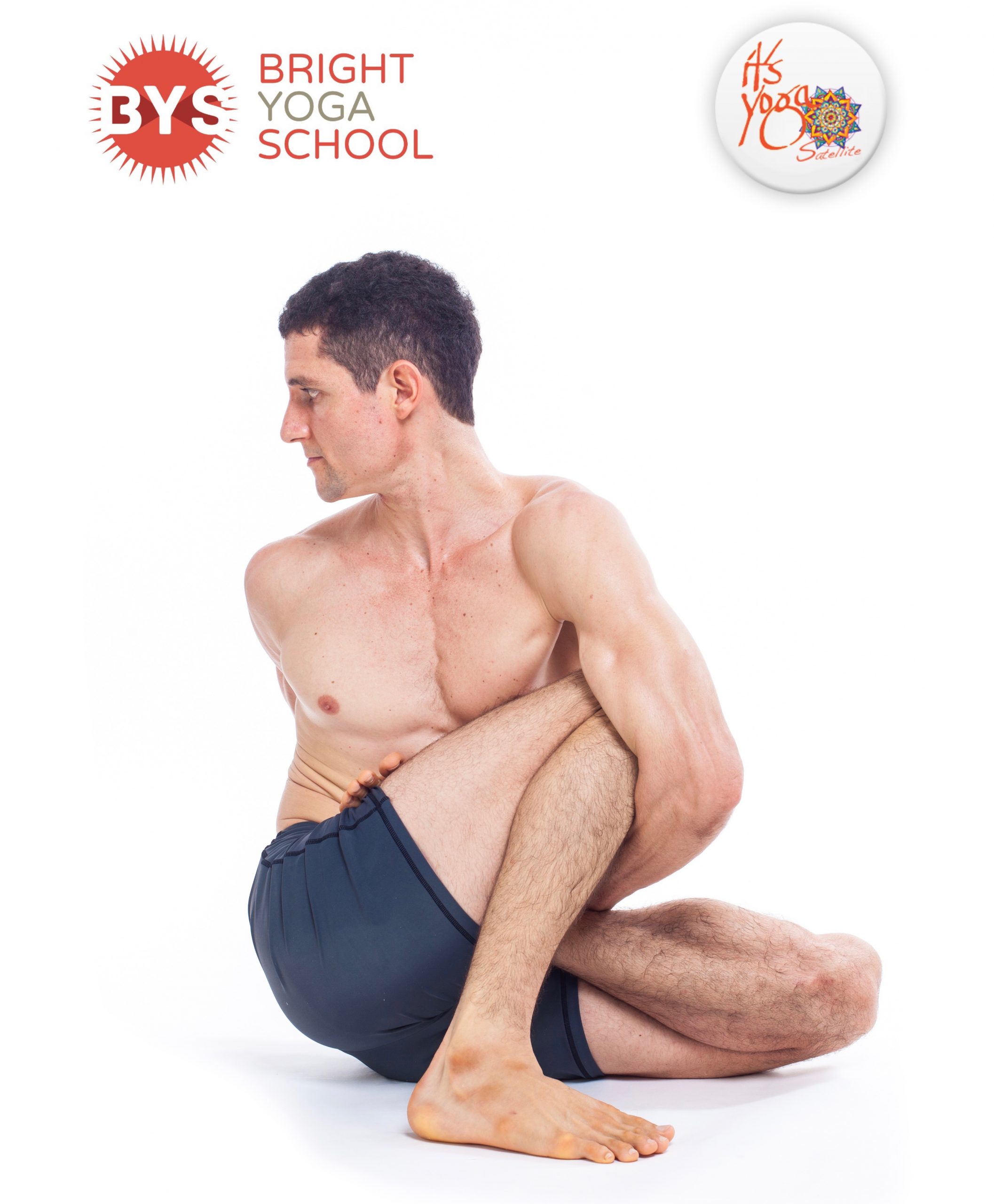Before we move on to some technical details on how to get into the asana, let’s first mention some of the signs that can let you know whether your body is or isn’t ready to get into the full version of this posture…
It is important to be able to bind deeply in Marichyasana D. If you get into this asana and there is still space between the armpit of the binding arm and the shinbone, it means that you have to pay more attention to the flexibility in either the thoracic spine (twisted position) or the internal rotation of the shoulder of the front arm. In this case, it will be advisable to work deeper and stay longer in postures like Parivritta Parsvakonasana – work on creating a deep bind in this standing twist by internally rotating the bottom shoulder, and your armpit must be connected with the thigh (or as close as possible to it). At the same time, send the top arm forward, open the chest and keep the back foot grounded
All this tips will allow you to build up the foundation for Marychiasana D. If binding is already possible (and there is little or no more space between the armpit and the shinbone), but you are experiencing pain on the lotus knee, it is better to first work on opening the hips in order to use the anatomical function of the hips instead of twisting the knee whenever you attempt to get into a full or half lotus posture.
One of the many benefits of Primary Series of Ashtanga Vinyasa Yoga is that all the previous asanas (before Marichyasana D) will help you to open the hips without straining the knee. In order to do this, we have to mindfully keep the sitting bone of the bent knee grounded on the floor in all the asymmetric seated posture – this will ensure that the hip of the bent leg is properly open without creating too much tension in the knee. However, an exception to this is in Marichyasana A and B, where it is advisable to keep the sitting bone of the bent knee off the floor.
To work in the flexibility of the hips, feel free to stay more than five breaths in all the Janu Sirsasana and Marichyasana before Marichyasana D; doing this will prepare the hips for the deep external rotation you need to have in order to get into Marichyasana D. In the standing postures a similar principle in how to open the hips can be apply by grounding the back foot in all the asymmetric standing asanas.
If you can bind without a gap (between your armpit and shinbone) in Marichyasana C, and your knee is pain-free when you practice half or full lotus postures (especially in Marychiasana B), then your body is ready nearly ready to get into Marichyasana D.
How to get onto Marichyasana D on the right side:
Inhale, bend the left knee and hold left ankle from behind. Bring the left heel close to the belly button. Exhale, use the external rotation of the hip and place the top of the left foot close to the crease of the right hip (half lotus posture).
Lean on the lotus leg until the right sitting bone is off the floor and bend the right knee up to the chest; keep your right heel in line with the right sitting bone.
Inhale, extend the left side of the back (but the back should be slightly rounded). Exhale, lean across towards the right knee and bring your left armpit as close as possible to the right knee – at this point, is advisable to work on the internal rotation of the left arm in order to assist the thoracic spine into the twist.
Inhale, extend the right arm back and then rotate the arm inward so that your right thumb will be pointing down. Exhale, move the arm behind the back, connect both hands together as you continue to externally rotate the right shoulder.
To keep the knee of lotus leg safe, keep it down and allow the right sitting bone to come off the ground. Please notice that the breathing described above is a modification that will allow you to slowly prepare the body in order to get into the asana. When your body is open enough, we would like to advise that you to follow the correct breath according to the Ashtanga Tradition, which means that from Adho Mukha Svanasana (Sapta), on your inhale, jump to seated, and get directly into the twist.
The most important advise for this asana will be patience. When you accept your body’s limitations today and give enough time for your body to gradually open, you will begin to reap the benefits of the practice.
If you have any particular questions or concerns regarding Marichyasana D (or any part of your yoga practice), please feel free to email us at info@brightyoga.com
Have a good day, and enjoy your practice!
